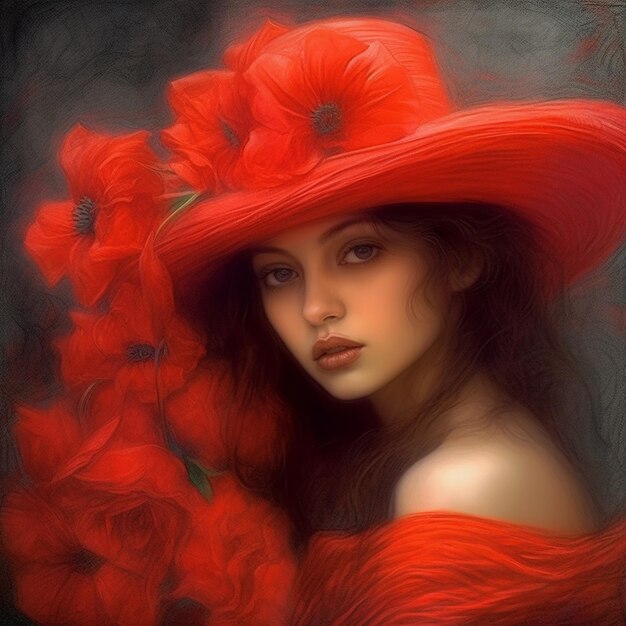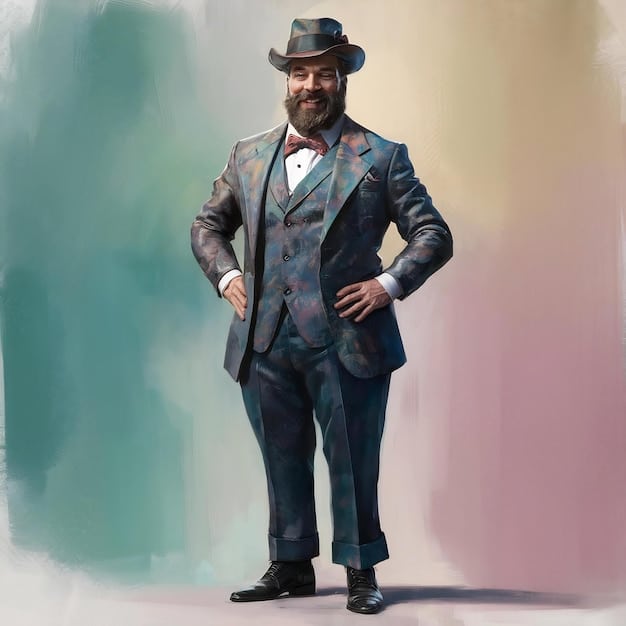Rediscovering the Genius of Giovanni Boldini: A Forgotten Masterpiece

Giovanni Boldini, an Italian genre and portrait painter of the Belle Époque, captured the elegance and dynamism of Parisian society through his distinctive and fluid brushstrokes, though his contributions have often been overshadowed in art history.
Step into the dazzling world of Belle Époque Paris and discover the artistry of Giovanni Boldini, a painter whose name deserves wider recognition. With his vibrant strokes and captivating portraits, Giovanni Boldini immortalized an era of elegance and opulence, yet remains a figure often overlooked in the annals of art history.
Who Was Giovanni Boldini? Unveiling the Artist
Giovanni Boldini (1842-1931) was an Italian genre and portrait painter who spent most of his career in Paris. During the Belle Époque, he became one of the era’s defining artists, capturing the era’s spirit in his unique style.
Boldini’s upbringing in Ferrara, Italy, influenced his early artistic development. His father, also a painter, instilled the importance of art and tradition. What set him apart and propelled him to Parisian stardom?
Early Life and Artistic Development
Born into an artistic family, Boldini was exposed to art early in life and displayed a natural talent. He received formal training in Florence, immersing himself in the Renaissance masters’ techniques, but his style would later evolve dramatically.
Transition to Paris and Early Success
In 1871, Boldini moved to Paris, a hub of artistic innovation. He quickly established himself as a sought-after portrait painter, capturing the Parisian elite’s likeness with remarkable flair. His understanding of color is what set him apart.

- Parisian Elegance: Boldini perfectly caught the opulence and elegance of Paris in the Belle Époque.
- Portrait Painting: Boldini’s success was due to his portraiture which was innovative for its time.
- Unique Style: His style set the tone for other artists and trends of the time.
Boldini’s early career laid the groundwork for his later achievements. He quickly became immersed in the Parisian art scene and adopted a style that uniquely expressed the era’s spirit. His portraits became famous for capturing more than just the physical appearance of his subjects; they captured a sense of their personality.
Boldini’s Signature Style: The Painter of Modern Life
Boldini’s unique style is what made him famous. His portraits captured the movement of modernism and his technique set him apart from the other artists of his time.
Giovanni Boldini’s signature style developed over the years, influencing others. How did Boldini develop this style and what are its defining characteristics?
The Boldini Brushstroke
Boldini’s brushstrokes were characterized by their fluidity and dynamism. He used long, sweeping strokes to create a sense of movement and energy in his paintings, a departure from the static portraits.
Capturing the Belle Époque
The Belle Époque was a period of optimism, prosperity, and cultural innovation in Europe. Boldini’s paintings perfectly captured this spirit, reflecting the dynamism of modern life.
- Fluid Brushstrokes: His strokes were sweeping and purposeful, creating motion.
- Portraying the Parisian Elite: Boldini was able to capture the personality of his subjects.
- Use of Light and Shadow: He used light and shadow to focus the paintings on his subjects.
Giovanni Boldini’s distinctive style captured the dynamism of Parisian society during the Belle Époque, setting him apart. His innovative techniques were influenced by his contemporaries during his time in Paris. His unique brushstrokes perfectly captured the movement of the time, highlighting his subjects in an innovative way.
Notable Works: Masterpieces of Portraiture
Giovanni Boldini created artwork throughout his life that portrays the Parisian Elite. These paintings stand as a testament to his talent and creative vision.
Giovanni Boldini is known for his various portraits and paintings that earned him recognition and fame. What are some of his most notable works and what makes them special?

Portrait of Madame X (1905)
One of Boldini’s most famous portraits, this painting depicts a mysterious woman in a black dress. The work exhibits Boldini’s mastery of capturing elegance and character on canvas.
Robert de Montesquiou (1897)
This portrait captures the essence of Robert de Montesquiou, a well-known figure in Parisian high society. Boldini’s ability to convey personality led to this painting’s fame.
- Portraits: Boldini successfully utilized portraits to gain traction as an artist.
- Masterpieces: His paintings and portraits were examples of the artistic skill that he possessed.
- Legacy: He left behind many great works for people to admire throughout the years.
Boldini’s achievements highlight his skill, artistic vision, and innovation. These works capture emotion and personality, which solidified his position in art history.
Boldini and Society: Capturing the Belle Époque Elite
Boldini’s career was defined by his unique skills and understanding of the society that he was surrounded by. He understood how to create artwork that appealed to the elite and how to capture their emotion on canvas.
Boldini was known for his ability to befriend the Belle Époque elite, translating into opportunities for art and wealth. How did Boldini interact with society and how did it influence his career?
Connections with the Parisian Elite
Boldini was a socialite and successful artist, leading to opportunities to interact with the Parisian elite. He forged relationships with wealthy families, intellectuals, and other influential figures.
Impact on Fashion and Culture
As a prominent portrait painter, Boldini influenced the fashions and cultural trends of his time. His portraits immortalized the attire, attitudes, and aesthetic ideals of the Belle Époque.
- Parisian Sensibilities: He understood the fashion and culture of his time which lead to his paintings displaying a uniquely Parisian flair.
- Social Connections: Boldini’s social connections opened up doors for his portrait painting career.
- Belle Époque Aesthetic: His portraits emphasized the beauty of the Belle Époque.
Boldini’s interaction with society was a defining aspect of his life. His career was defined and influenced by this interaction and by his ability to capture subjects in a unique way.
Challenges and Criticisms: Controversy in the Art World
Boldini’s reputation and artwork have not always been viewed so highly. He faced controversies and criticisms for some of his artistic choices. These debates surrounding his work have continued to shape his legacy to this day.
Although widely praised, Boldini’s work was not immune to challenges and criticisms. What were some of these controversies and how did they impact his career?
Debates About Style and Technique
Some critics believed Boldini’s style was superficial. The debates went deeper than just personal preference; some believed his way of painting was too focused on beauty rather than substance.
Gender and Representation
Boldini’s representation of women was also a source of controversy. Some viewed his portraits as objectifying women.
- Debates About Style: Artists and critics debated about the merits and disadvantages to his artistic choices.
- Criticism of Women: His objectification of women led to his art being seen in a negative light.
- Lasting Impact: The controversies changed how to see his art and how he is viewed to this day.
Despite the controversy, Boldini’s work has had a lasting impact on the art world, influencing generations of artists. The artist’s challenges and criticisms have shaped how he is perceived. By exploring these debates, we gain a better understanding of the complexities surrounding his art.
Legacy and Influence: Boldini’s Enduring Mark
Giovanni Boldini left behind a lasting legacy in the art world. His impact on art endures and continues to be seen in galleries around the world.
Boldini’s lasting legacy and influence speak to the importance of his existence and artwork. How has he influenced generations of artists and how is his work appreciated today?
Influence on Modern Art
Boldini’s approach to portraiture influenced modern art. His dynamic brushwork and focus on capturing movement inspired artists to push the boundaries of traditional portraiture.
Rediscovering Boldini Today
Today, Boldini’s work is experiencing a rediscovery. Museums and galleries worldwide are showcasing his paintings, attracting new audiences and generating interest.
- Modern Influence: Boldini’s work inspired many modern artists during his time and those that followed.
- Rediscovery: His work is appreciated more now than ever, leading to a renaissance of his art.
- Important Legacy: Boldini’s legacy lives on through the innovation that he introduced to the portrait and artistry.
Boldini’s legacy makes it clear how important his work was for his innovation. His artistic ability to capture the fleeting moments of Parisian life has solidified his place in art history. Despite challenges and controversies, his unique viewpoint still inspires artists today.
| Key Point | Brief Description |
|---|---|
| 🎨 Boldini’s Style | Fluid brushstrokes capturing movement and elegance. |
| 🌟 Notable Works | Portraits like Madame X and Robert de Montesquiou. |
| 🌆 Belle Époque | Captured the spirit of Parisian high society. |
| 🖼️ Lasting Legacy | Influenced modern art and continues to inspire artists. |
Frequently Asked Questions
▼
Boldini is most known for his portraits. His paintings captured not only what the subject looked like, but also the feeling of that individual. He also portrayed Parisian life with his artwork.
▼
Boldini used long brushstrokes in his paintings to provide an energetic flair to his paintings. He was also known as a socialite, which allowed him to capture emotion in his subjects.
▼
Some of Boldini’s most renowned paintings include “Portrait of Madame X” and “Robert de Montesquiou”. These paintings reflect Boldini’s commitment to portrait artistry and his ability to capture the energy and sophistication of turn-of-the-century Paris.
▼
Boldini was very sociable, which opened doors for him to paint members of the Parisian elite. This trait benefited his portrait painting career and allowed him to continue to pursue his craft.
▼
Boldini is viewed as an important figure and innovator in art history. His work is being rediscovered by museums, galleries, and other artistic venues. The legacy of his life lives on.
Conclusion
Giovanni Boldini’s legacy as a painter of modern life extends beyond the canvas. His ability to capture the spirit of the Belle Époque has solidified his spot in art history. His works continue to bring people together to see the beauty and innovation that he contributed to the art world.





